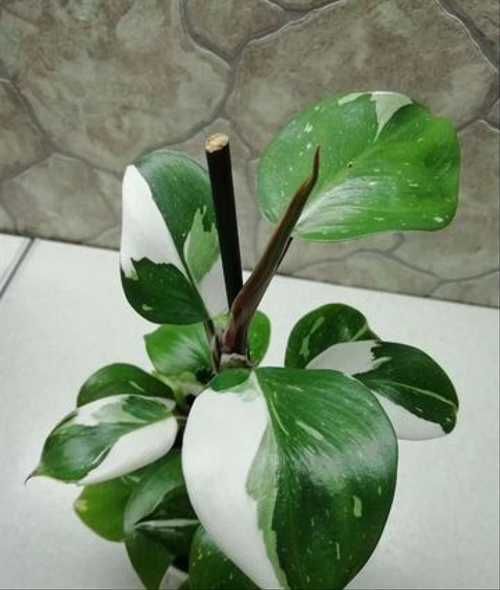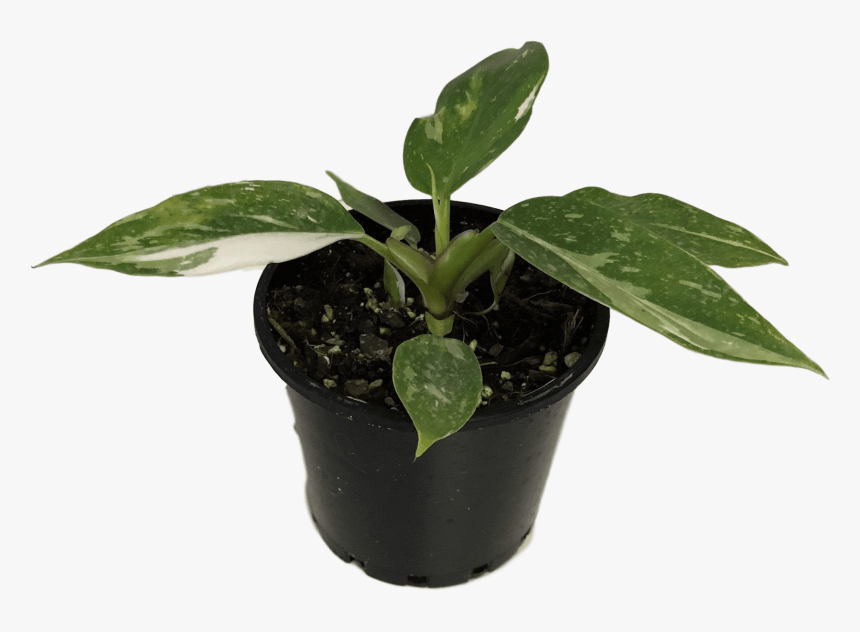Philodendron ‘white knight’ is a member of the Aroid family. This is a perennial evergreen plant native to the tropics of South America. In the middle lane, it is grown exclusively as a houseplant, in pots. Often used for decorative landscaping purposes.
The aerial part of the plant is represented by a vine or shrub. The stem becomes woody with age like a monstera, then the plant can grow without additional support.
The root system is sensitive and located superficially. Philodendron ‘white knight’ leaves have a different color, which depends on the variety.
Table of Contents
Plant Description
Philodendron ‘white knight’ is a prominent representative of the Aroid family. it is a perennial evergreen plant. The genus itself is wide, it has more than 900 varieties, and so far not all of them have been studied by botanists.
At home, no more than 100 varieties are successfully grown. Many of them are not common, they can be found in the collections of true connoisseurs.
The stems of the Philodendron ‘white knight’ are wide and massive, eventually becoming wooden at the base. The leaf plate is large and shiny. The leaves themselves have a different color, often carved.
The length of the leaf is varied, in some varieties, they reach 90 cm when grown in room conditions. Leaf shape: oval, pinnately dissected, swept, ovate, heart-shaped.
A distinctive feature is that young leaves first have one shape, and as the bush grows older, they change it to another. The color of the top of the leaf is often darker than its underside.
Like all Aroids, the Philodendron ‘white knight’ is a flowering plant, but its inflorescence is not of decorative value. It is represented by a modest yellow cob wrapped in a white veil. Flowering can be traced only in the wild, cultivated varieties bloom very rarely.
Only when creating optimal conditions, therefore, in indoor floriculture, the Philodendron ‘white knight’ is grown only as a decorative leafy crop.
Important! Do not lose sight of the fact that Philodendron ‘white knight’ juice is poisonous. For this reason, the plant is forbidden to be placed in children’s rooms. When working with a plant, hands should be protected with disposable gloves, this will avoid burning the skin.
Care for Philodendron ‘White Knight’
Air humidity
Philodendron ‘white knight‘ is able to tolerate low humidity, but this worsens the appearance of the culture. Spraying should be done daily, once a month the plant should be bathed under a warm shower.
Philodendron ‘white knight’ feels great near an east or west window, it needs a lot of diffused light.
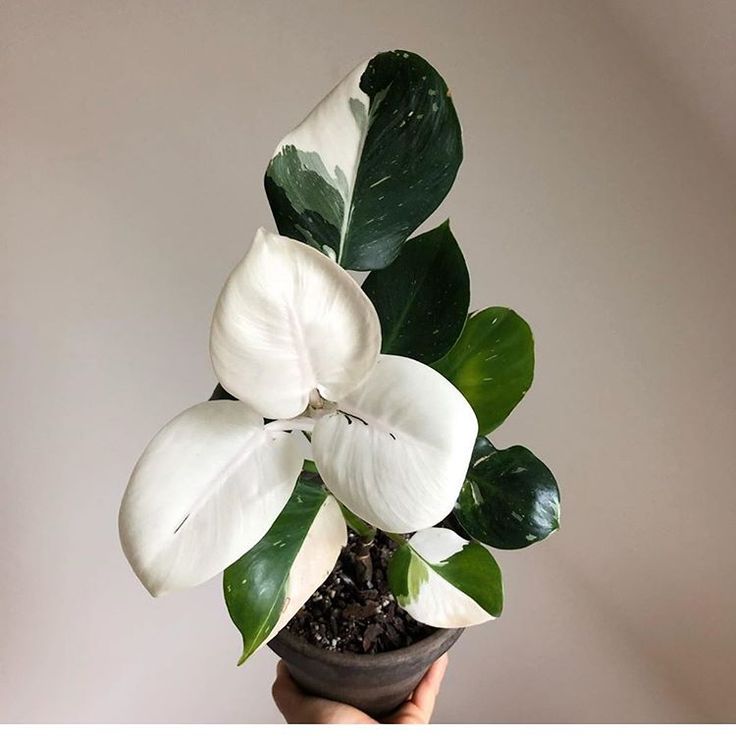
Priming
It should be loose, optimally the predominance of peat in the composition.
rest period
In winter, the growth of the plant slows down, but it remains evergreen.
Each of these requirements should be considered in detail. Keep in mind that some varieties of Philodendron are variegated.
Caring for these varieties is more painstaking. They are demanding temperature, top dressing, and lighting. When placed in a shaded corner, the leaves of the culture may lose their variegation and become monochromatic.
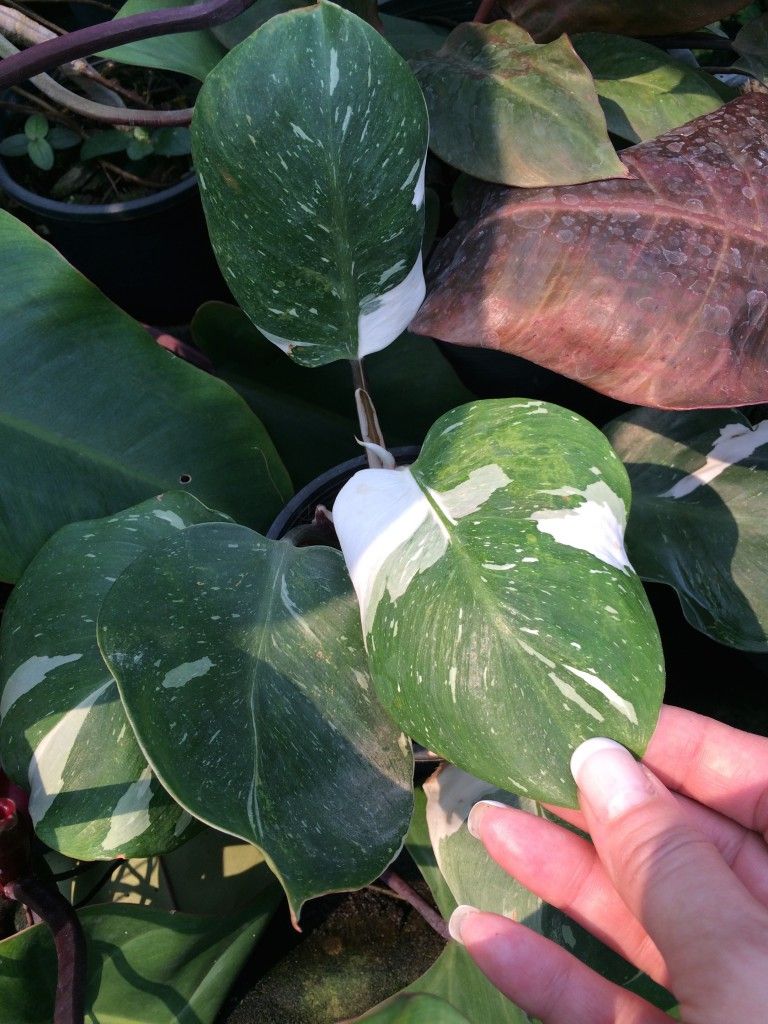
Temperature
Philodendron ‘white knight’ is a tropical plant that grows well and develops at moderate temperatures. It should be kept at home in rooms where the temperature is in the range of 20 to 25 degrees.
Overheating negatively affects the condition of the plant. Placing under the scorching sun often causes burns on leaf plates.
In winter, the temperature should be lowered. So the plant will better endure a period of mild dormancy. Pay attention to the fact that at this time the main thing is to avoid overflow. Active watering at low temperatures often causes rotting of the root system.
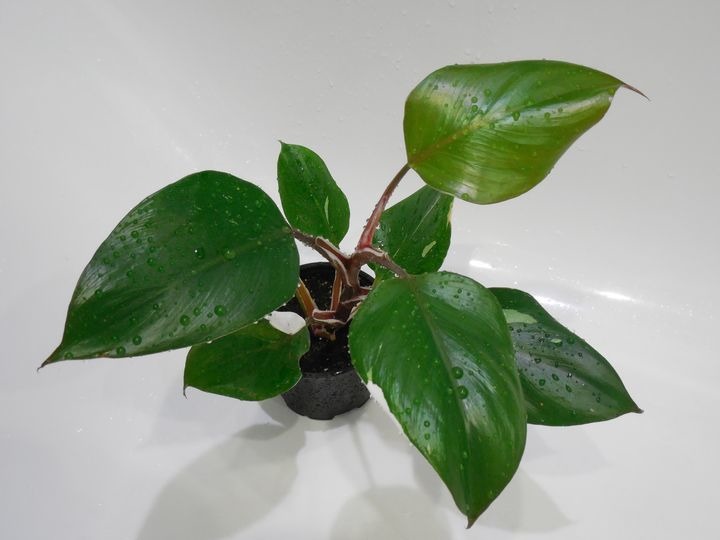
In this case, it will be very difficult to reanimate the Philodendron ‘white knight’. The permissible temperature indicator is in the range of 15-18 degrees, but more resistant varieties are able to withstand a decrease to 12-13 degrees.
Air Humidity
Philodendron ‘white knight’ is not considered a capricious plant, but it is necessary to provide it with an optimal indicator of humidity in the room. If this condition is not observed, the leaves become withered and shrink, and the bush itself grows worse and does not develop so actively.
Philodendron ‘white knight’ requires a humidity level of 70% for normal growth. This can be achieved through periodic spraying. It is enough to moisten the air around the plant from a spray bottle 2-3 times a day.
After turning on the central heating systems, it becomes more difficult to achieve the required mark. To normalize the indicator during this period, it is recommended to install a tray with liquid or moistened expanded clay near the flowerpot with the plant.
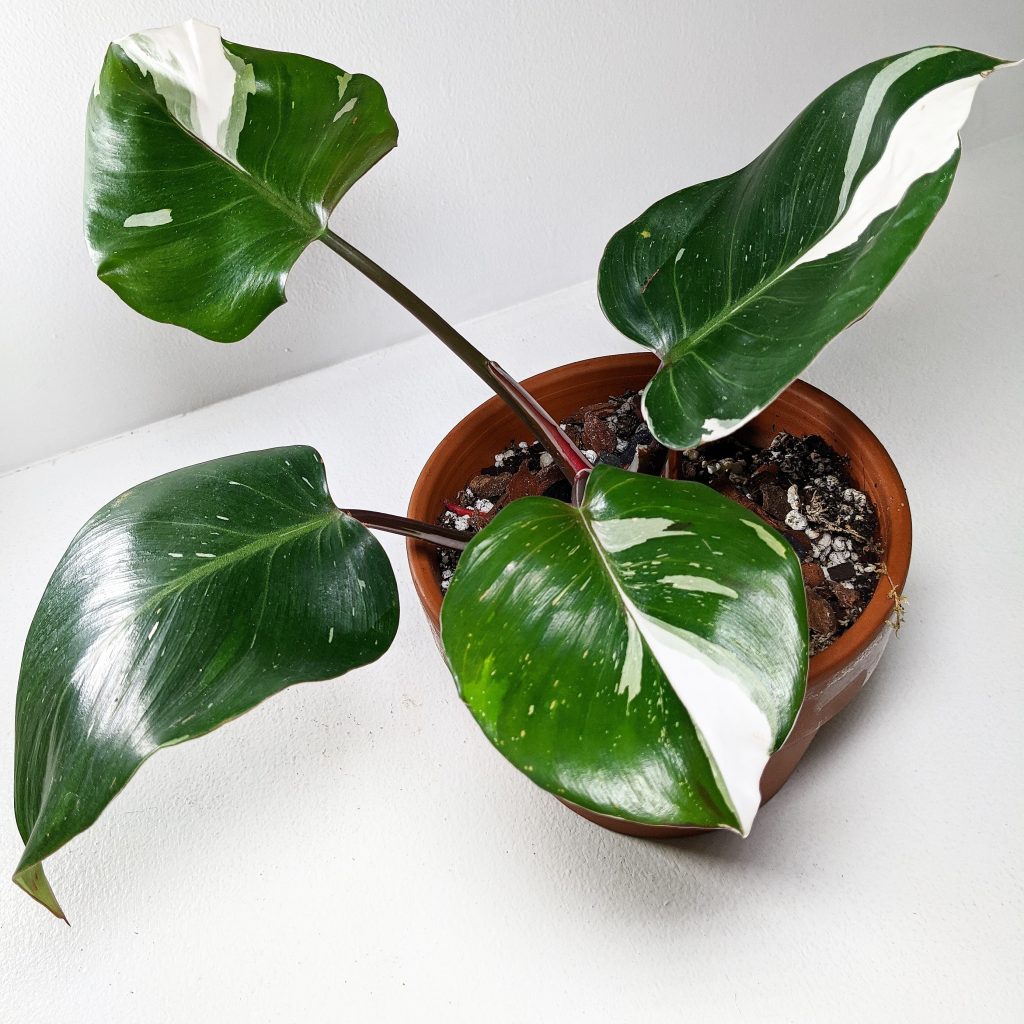
The surface of the soil in a pot can be covered with sphagnum, which must be moistened daily.
Attention! Dust on the surface of the leaves is the main enemy, taking away the health of the Philodendron ‘white knight’. Its layer prevents the normal flow of the air exchange process. Dust must be removed from the surface of the leaf plate regularly – 1-2 times a week.
A warm shower will bring benefits to the Philodendron ‘white knight’. The procedure is carried out only in the warm season, from spring to autumn. To ensure it, the plant, together with the pot, is placed in a bath, and the soil is covered with a film or a piece of polyethylene.
Adjust the temperature in the shower to a comfortable level (recommended 35-37 degrees). The leaves are rinsed, after the plant is left in the bathroom until completely dry, and then returned to a permanent place.
Lighting
Philodendron ‘white knight’ is not picky about this indicator. The plant grows well in partial shade, but it is better to place the pot in an area with diffused light.
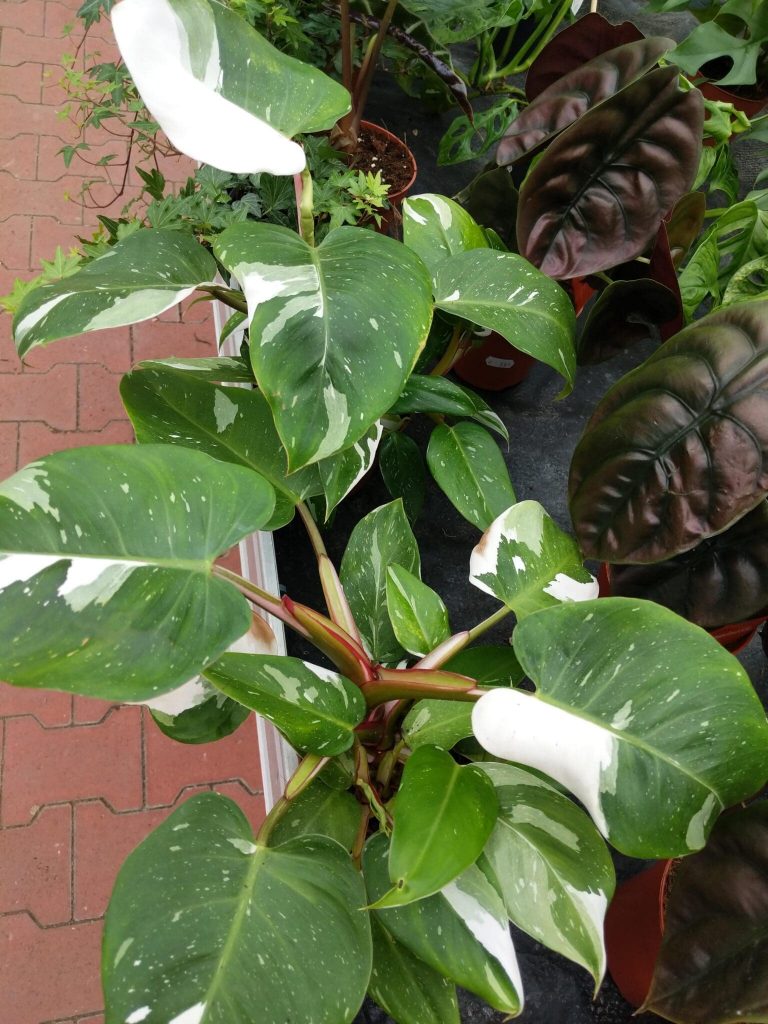
When choosing a place to place a Philodendron ‘white knight’, consider the following recommendations:
- Variegated varieties are more capricious and demanding of light. They should be placed on windowsills with east and west orientations. With a lack of light, the leaf plates lose their color.
- In summer, any variety of Philodendron should be protected from direct sunlight.
- In winter, the plant is recommended to be illuminated with a special photo lamp, otherwise, the vine can be very stretched due to the short daylight hours.
Consequently, The Philodendron ‘white knight’ is a plant that can easily grow and develop in the shade, but you can get a healthy and beautiful specimen only if it is provided with sufficient diffused light.
Watering
Philodendron ‘white knight’ does not tolerate excessive drying of the soil. In summer, when the room temperature is high, watering should be done at least once every 4 days. In winter, the frequency of watering is reduced to 1 time in 1-1.5 weeks.
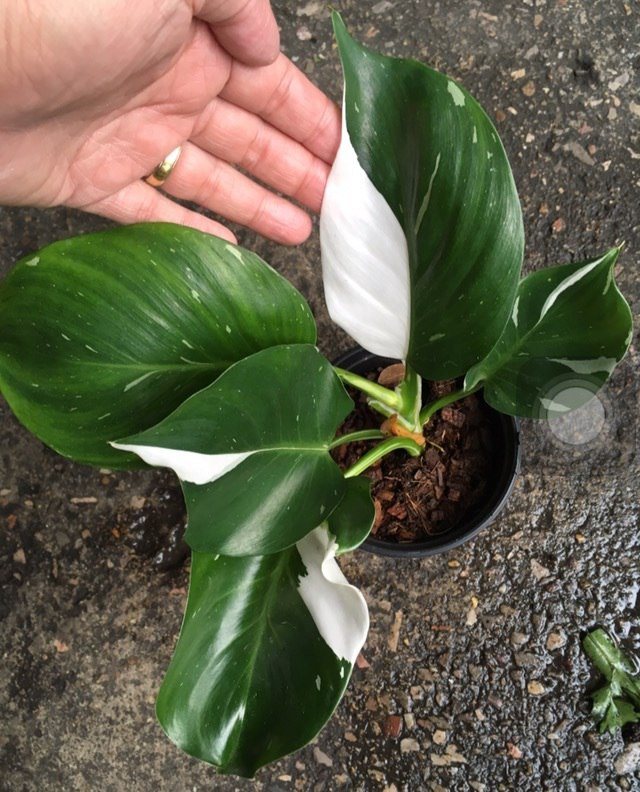
The main thing is the absence of stagnation of liquid at the bottom of the pot. To eliminate this problem, it is necessary to arrange high-quality drainage at the bottom so that excess liquid comes out.
Attention! For irrigation, you need to use settled water. chlorine impurities can harm the culture.
For purchasing the finest watering hose, refer to this soaking hose buying checklist.
Top Dressing
During the period of active plant growth (spring-summer), it is necessary to apply mineral fertilizer with a high nitrogen content to the soil, that is, adapted for decorative and deciduous crops.
The frequency of feeding is 1 time in 2 weeks, but it is difficult to determine the exact schedule. If the Philodendron ‘white knight’ is actively developing, the frequency can be reduced to 1 time per month to avoid oversaturation.
Pruning Philodendron White Knight

The Philodendron ‘white knight’ is a large liana, so pruning is required to form a lush bush. In order not to harm the plant, simple rules must be followed during its implementation. For example:
- pruning is carried out exclusively in early spring, immediately after the plant moves away from winter dormancy;
- during its implementation, it is important not to injure the aerial roots, they do not need to be cut;
- the place of cuts must be treated with activated carbon or other composition that prevents the process of decay.
Constant care for a Philodendron ‘white knight’ includes the timely removal of dried and spoiled leaves. This is necessary to maintain beauty, the procedure is carried out regardless of the season.
Transfer
Philodendron ‘white knight’ does not like cramped dishes, so you should use an impressive pot for planting it. The main requirement is that it must correspond to the volume of the root system and be 20-25% larger than it.
There are no requirements for the material for making the pot; the culture feels equally good in clay and plastic pots.
For normal growth, the plant requires a special soil mixture, which should include the following components:
- riding peat – 2 parts;
- sod land – 2 parts;
- river sand – 1 part;
- humus – 1 part;
- bark;
- sphagnum moss;
- charcoal.
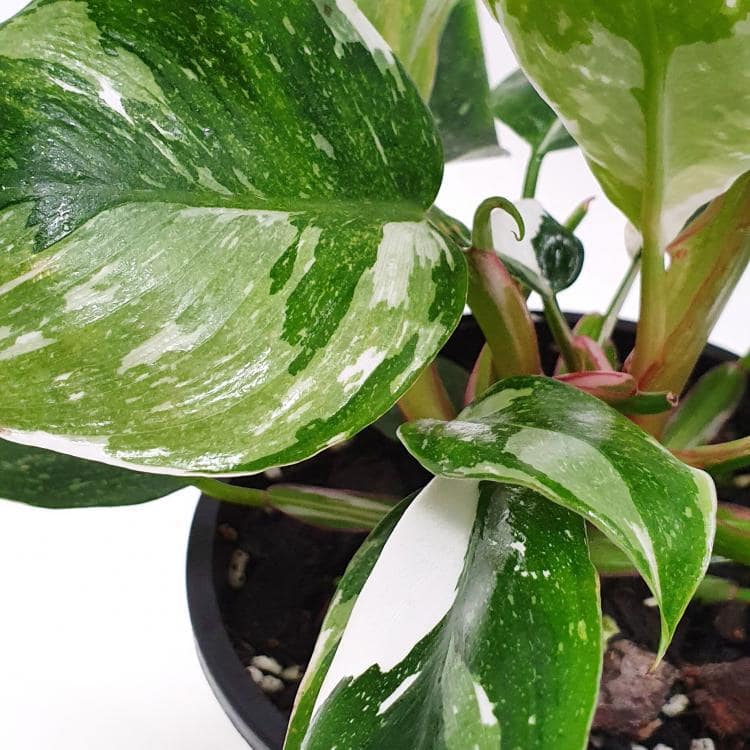
Attention! When transplanting a plant, it is important not to forget about the device of high-quality drainage.
Please note that the Philodendron ‘white knight’ grows very quickly, so young specimens often require transplanting several times a year. Plants with the age of 3 years, planted in bulk containers are transplanted less often – 1 time in 2-3 years.


